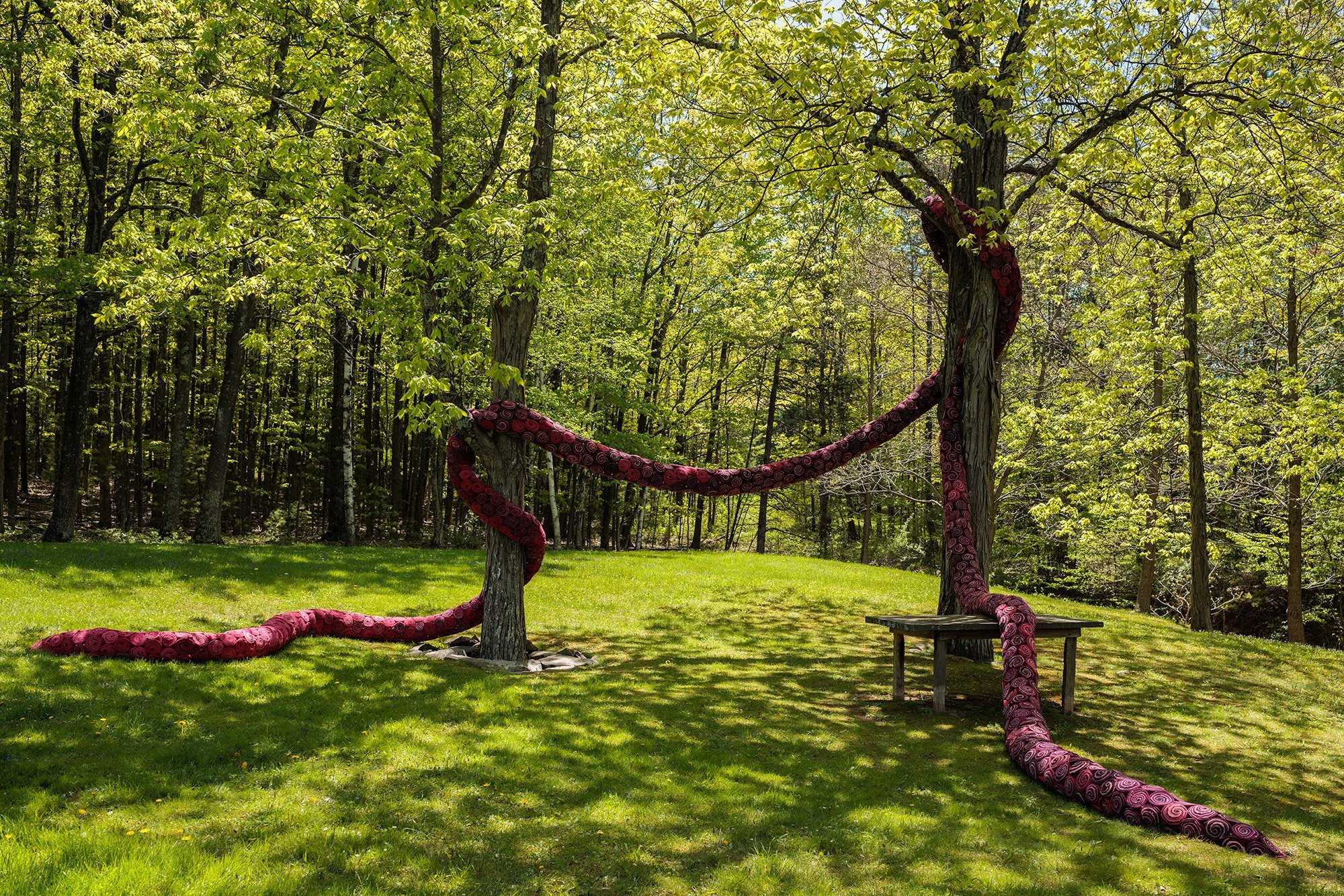On the Grounds: Anina Major and Sagarika Sundaram
The idea of home is a point of departure for these two artists site-responsive works on the grounds of the Al Held Foundation. Both employ their media’s unique relationship to environmental systems—for Major, clay derived from the ground and for Sundaram, wool procured from grazing sheep—highlighting that, to make a home, it takes both people and their most cherished matter. For each artist, a deep engagement with material history underscores how culture and nature are entwined.
May 13 - October 14, 2023, with the River Valley Arts Collective at the Al Held Foundation, Boiceville






The vibrant spiraling geometries of Sundaram’s felted wool installations echo phenomena of geodes, shells, symbiotic lichen, among other natural wonders. Here she probes the boundaries among species by combining anthropomorphic, botanical, fungal, and mineral forms in niches throughout the landscape. Felted disks spill out from a cracked boulder (perhaps an erratic left by a moving glacier long ago?) and loop around the limbs of trees, like a drawing in space, and bring attention to the animation of matter we typically consider static. The dynamics of the patterning and accumulative shapes suggest a vital life energy which flows through all aspects of the earth. The artist collaborates with an Indian fiber producer, Kullu Karishma celebrating the Central Asian cultures that have long been associated with felt, including nomadic groups who use it for shelter. In these works, wool from the Himalayas and the Hudson Valley co-exist as interlocutors, revealing how our concepts of ‘home’ and ‘here’ are interdependent. For Sundaram wool is a connective tissue among cultures and places in flux. Where humans live with animals, there is felt. Where there is a felt, we find connection. Merino and Shetland wool for the project was provided by Cabbage Hill Farm in Mount Kisco, NY and processed by Battenkill Fibers in Greenwich, NY and Himalayan Gaddi wool was provided by Kullu Karishma from Himachal Pradesh, India.





